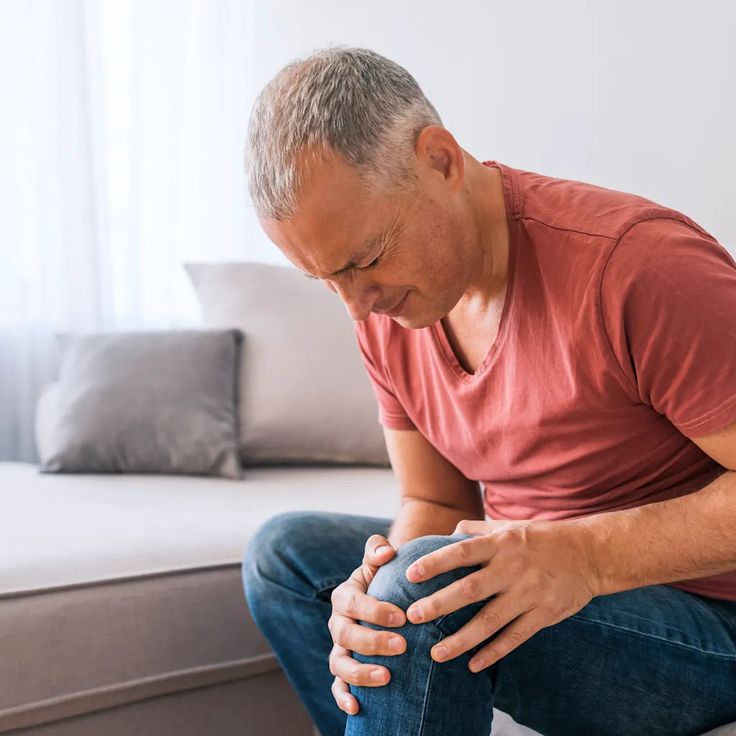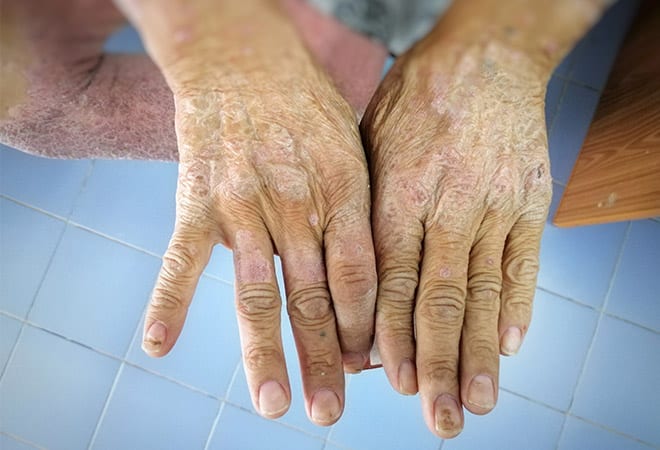
Osteoarthritis: Causes, Symptoms, Prevention, and Treatment
Osteoarthritis (OA) is the most common form of arthritis, affecting millions of people worldwide. Often referred to as “wear-and-tear” arthritis, it occurs when the protective cartilage that cushions the ends of bones wears down over time, leading to pain, stiffness, and reduced mobility. According to the Arthritis Foundation, OA affects over 32.5 million adults in the United States alone, making it a leading cause of disability. In this comprehensive guide, we will explore the causes, symptoms, prevention strategies, and treatment options for osteoarthritis to help you understand and manage this condition effectively.
What is Osteoarthritis?
Osteoarthritis is a degenerative joint disease characterized by the breakdown of cartilage and underlying bone in the joints. It most commonly affects weight-bearing joints such as the knees, hips, and spine, but can also occur in the hands, shoulders, and other joints. Unlike inflammatory forms of arthritis like rheumatoid arthritis, OA primarily results from mechanical stress and aging, though other factors contribute. The condition leads to pain, swelling, and stiffness, which can significantly impact quality of life.
OA develops gradually, often over years, and its symptoms can vary from mild to severe. While it is more common in older adults, younger individuals can develop OA due to joint injuries or genetic predispositions. Understanding the causes, recognizing symptoms early, and adopting preventive measures can help manage OA effectively.
Autoimmune Disorders: Recognizing the Signs, Diagnosis, and Treatment
Causes of Osteoarthritis
The development of osteoarthritis is multifactorial, involving a combination of genetic, biomechanical, and environmental factors. Below are the primary causes:
- Aging: As people age, the cartilage in joints naturally loses elasticity and becomes more prone to damage. The ability to repair cartilage diminishes, increasing the risk of OA. “Osteoarthritis is often called ‘wear-and-tear arthritis’ because it develops over time as cartilage breaks down,” notes the Mayo Clinic.
- Joint Injury or Overuse: Previous injuries, such as fractures, ligament tears, or repetitive stress from activities like sports or manual labor, can accelerate cartilage breakdown. For example, athletes with prior knee injuries are at higher risk.
- Obesity: Excess body weight places additional stress on weight-bearing joints like the knees and hips, accelerating cartilage wear. Obesity also triggers systemic inflammation that may worsen OA. According to the Arthritis Foundation, every pound of excess weight exerts about four pounds of extra pressure on the knees.
- Genetics: A family history of OA increases the likelihood of developing the condition, particularly in the hands. Genetic mutations affecting cartilage structure, such as those in collagen genes, can predispose individuals to OA.
- Joint Misalignment or Abnormalities: Conditions like bowlegs, knock-knees, or hip dysplasia can unevenly distribute weight across joints, leading to faster cartilage deterioration.
- Other Factors: Women are more likely to develop OA than men, possibly due to hormonal influences or differences in joint biomechanics. Certain metabolic disorders, such as diabetes, and conditions like hemochromatosis can also increase risk.
Symptoms of Osteoarthritis
Osteoarthritis symptoms develop slowly and worsen over time, often affecting daily activities. Recognizing these symptoms early can lead to timely intervention and better outcomes. Common symptoms include:
- Joint Pain: Pain during or after movement is a hallmark of OA. It may worsen with activity or after periods of inactivity. “Pain is often worse in the morning or after sitting for long periods,” explains the Mayo Clinic.
- Stiffness: Joint stiffness, particularly in the morning or after rest, is common. This “gelling” phenomenon typically improves with movement but may return after prolonged inactivity.
- Swelling: Inflammation of the joint lining (synovium) or fluid buildup can cause swelling, particularly in the knees.
- Reduced Range of Motion: Affected joints may lose flexibility, making it difficult to perform tasks like bending, climbing stairs, or grasping objects.
- Grating Sensation or Crepitus: A crunching or grinding sound during joint movement is common due to cartilage loss and bone-on-bone contact.
- Bone Spurs: Extra bone growth (osteophytes) around the affected joint can cause discomfort or limit movement.
Rheumatoid Arthritis: Causes, Symptoms, Prevention, and Treatment
Symptoms vary depending on the joint affected and the severity of cartilage loss. For example, OA in the hands may cause bony enlargements (Heberden’s or Bouchard’s nodes), while knee OA often leads to difficulty walking or climbing stairs.
Diagnosing Osteoarthritis
Diagnosing OA involves a combination of clinical evaluation, medical history, and diagnostic tests. Physicians typically:
- Assess Symptoms and Medical History: Doctors ask about joint pain, stiffness, and any history of injuries or family OA.
- Perform a Physical Exam: Checking for joint tenderness, swelling, or reduced range of motion helps confirm OA.
- Use Imaging Tests: X-rays can reveal cartilage loss, bone spurs, and joint space narrowing. MRIs may be used to assess soft tissue damage.
- Conduct Lab Tests: Blood tests or joint fluid analysis can rule out other conditions like rheumatoid arthritis or gout.
Early diagnosis is critical to prevent further joint damage and manage symptoms effectively.
Prevention of Osteoarthritis
While some risk factors like age and genetics are unavoidable, several strategies can reduce the risk of developing OA or slow its progression:
- Maintain a Healthy Weight: Losing excess weight reduces stress on weight-bearing joints. “Even a modest weight loss of 5-10% of body weight can significantly reduce pain and improve function in knee OA,” states the Arthritis Foundation.
- Stay Physically Active: Low-impact exercises like swimming, cycling, or walking strengthen muscles around joints, improving stability and reducing wear on cartilage.
- Protect Joints: Avoiding repetitive stress or overuse injuries by using proper techniques during sports or work can prevent OA. Wearing supportive shoes and using assistive devices can also help.
- Eat a Balanced Diet: A diet rich in anti-inflammatory foods, such as fruits, vegetables, whole grains, and omega-3 fatty acids, may reduce inflammation and support joint health.
- Manage Chronic Conditions: Controlling conditions like diabetes or high cholesterol can lower OA risk.
- Posture and Ergonomics: Proper posture and ergonomic workstations reduce strain on joints, particularly in the spine and hands.
How Does Lupus Affect the Skin, Joints, and Organs?
Treatment Options for Osteoarthritis
Osteoarthritis treatment focuses on relieving pain, improving joint function, and slowing disease progression. A combination of medical interventions, lifestyle changes, and alternative therapies is often used, tailored to the individual’s needs.
Non-Surgical Treatments
- Medications:
- Analgesics: Acetaminophen can relieve mild to moderate pain but should be used cautiously to avoid liver damage.
- Nonsteroidal Anti-Inflammatory Drugs (NSAIDs): Ibuprofen or naproxen reduce pain and inflammation but carry risks of gastrointestinal or cardiovascular side effects according to Cleveland Clinic.
- Topical Agents: Capsaicin or NSAID creams can provide localized pain relief, says Arthritis Foundation.
- Cortisone Injections: Corticosteroid injections can reduce inflammation and pain for weeks to months, though repeated use may weaken tissues, notes NIAMS.
- Hyaluronic Acid Injections: These provide lubrication and cushioning in the joint, particularly for knee OA, though efficacy varies.
- Physical Therapy: A physical therapist can design exercises to strengthen muscles, improve flexibility, and reduce joint stress. Aquatic therapy is particularly effective for reducing impact on joints.
- Assistive Devices: Braces, canes, or shoe inserts can stabilize joints and reduce pain during movement.
- Lifestyle Modifications: Weight loss, regular exercise, and a healthy diet are critical for managing OA symptoms and improving overall health.
Surgical Treatments
For severe OA unresponsive to conservative treatments, surgical options may be considered:
- Joint Replacement (Arthroplasty): Replacing the damaged joint with an artificial one, commonly for hips or knees, can restore function and reduce pain.
- Osteotomy: Realigning bones to redistribute weight can delay the need for joint replacement, particularly in younger patients.
- Arthroscopy: This minimally invasive procedure removes damaged cartilage or bone spurs, though its benefits for OA are limited.
Understanding and Managing Low Blood Sugar
Complementary and Alternative Therapies
- Acupuncture: Acupuncture may reduce OA pain, particularly in the knee, as suggested by NIAMS.
- Supplements: Glucosamine and chondroitin sulfate may provide modest relief for some patients, though evidence is mixed.
- Mind-Body Techniques: Yoga, tai chi, and meditation can improve flexibility, reduce stress, and enhance well-being.
Living with Osteoarthritis: Practical Tips
Managing osteoarthritis requires a proactive approach to maintain joint health and quality of life. Here are some practical tips:
- Stay Active: Engage in low-impact activities like swimming or yoga to keep joints mobile without causing strain.
- Monitor Symptoms: Keep a symptom diary to track pain and triggers, helping you and your doctor adjust treatments.
- Join Support Groups: Connecting with others through organizations like the Arthritis Foundation can provide emotional support and practical advice.
- Work with a Healthcare Team: Regular check-ups with a rheumatologist, physical therapist, or orthopedic specialist ensure comprehensive care.
Conclusion
Osteoarthritis is a prevalent and potentially debilitating condition, but with early diagnosis, appropriate treatment, and lifestyle changes, individuals can manage symptoms and maintain an active life. Understanding the causes—such as aging, obesity, and joint injuries—and recognizing symptoms like pain and stiffness are crucial for timely intervention. Preventive measures, including weight management and exercise, can slow disease progression, while treatments ranging from medications to surgery offer relief for varying severities.







